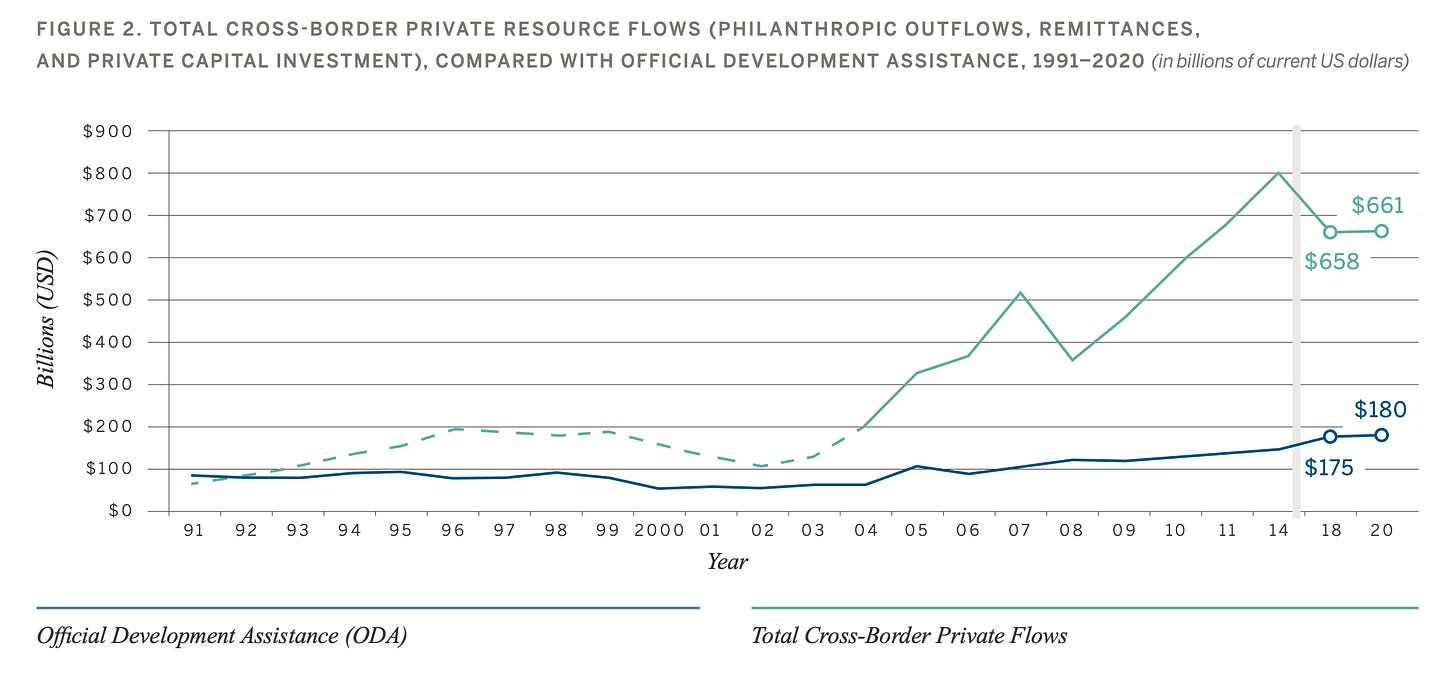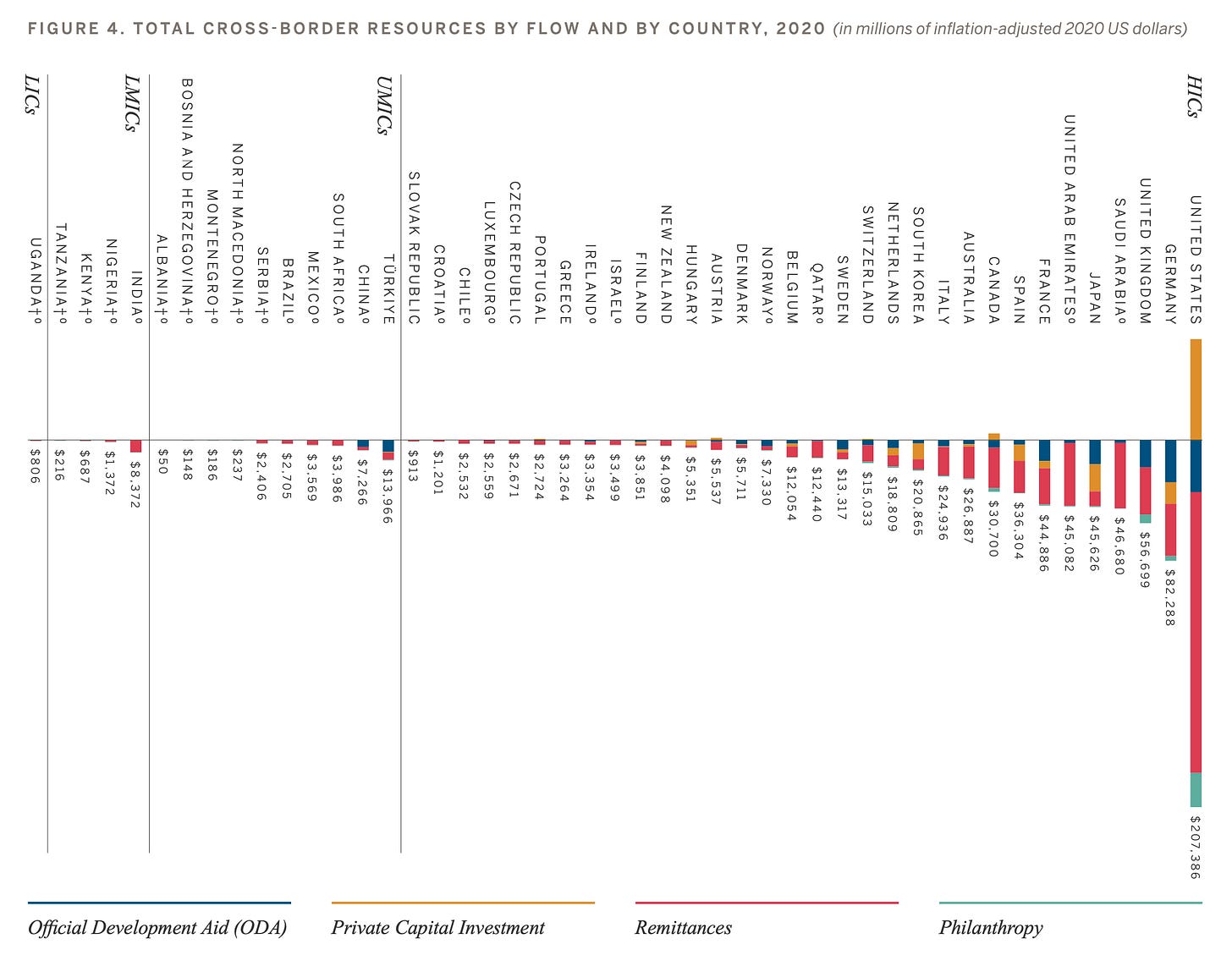Global South diaspora gives money: ignored.
↳ Global North donates to Global South: praised.
So the savior mentality of some Westerners — “first they should help themselves” — is a tired colonial lie that won’t die.
Because the Global South already is helping themselves. To the tune of $590 billion a year in remittances. These quiet giants of giving donate more to families and communities than all other international aid.
Combined.
🏦 Like official development assistance: $180B
💸 Or cross-border philanthropy: $70B
💰 And private capital: $400M
This is a wake-up call.
“Global South countries have predominantly been labeled as donor dependent, perpetuating the vicious cycle of unequal power dynamics between the Global North and South,” says Willson Chivhanga.
“The consequence has been skewed foreign and domestic policy… and development apathy among Global South citizens who have been systematically conditioned to believe that they have nothing to contribute towards their own development.”
Here’s the storytelling opportunity. ⤵
Migrants donate ~15% of earnings as remittances. Americans, by contrast, give just 2% to charity.
“It is important to recognize migrants as key contributors to development and give them the same respect and honor reserved for billionaire philanthropists,” says Gillian Marcelle, PhD.
Truth.
And let’s stop saying remittances aren’t as impactful as other philanthropy because it’s just “subsistence money” for family consumption. Western Union found the top uses of remittances were healthcare, food, housing, and education — the same stuff Western donors invest in.
Especially because many communities pool remittances for long-term sustainability, according to Una Osili. Like a water project or building schools and hospitals.
That’s why it’s paternalistic to think the Global South diaspora can’t deploy its own donations wisely.
“Migrant workers make an invaluable contribution to SDGs through remittances and investments,” says International Fund for Agricultural Development.
In short:
Remittances are an unsung hero of global development. So let’s rebrand them as a headliner in our narratives.
It may be quiet funding.
But it’s loud impact.
💪🏽💛
The daily bonus
A few additional infographics from the Indiana University Lilly Family School of Philanthropy, 2023 Global Philanthropy Tracker.
“A first-of-its-kind research project, The Global Philanthropy Tracker (GPT) measures cross-border donations from individuals and organizations around the world. The GPT presents data on four flows — philanthropic outflows, official development assistance (ODA), remittances, and private capital investment.”








